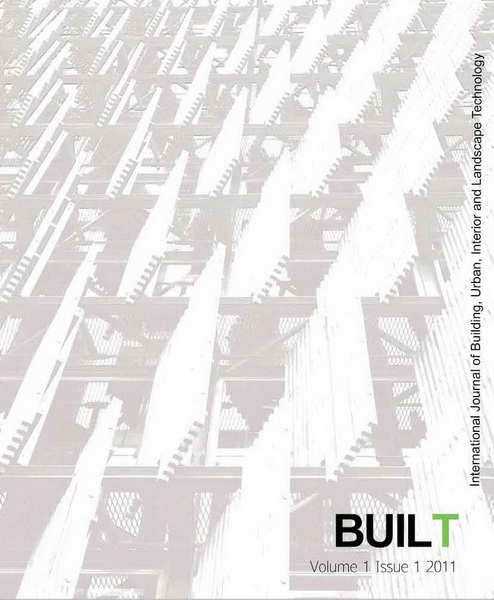Reaching Design Solutions Using Building Technology Simulation: New Thai Parliament Design Competition
Keywords:
Simulation, Sustainable design, Energy and environment, Design, Building technology, ParliamentAbstract
Under the current environmental and energy concerns, architects are forced to design better buildings which are both energy efficient and environmental friendly. Green ideas and concepts presented by designers are typically sketches and simple design diagrams which come from past design experiences and expertise. Design solutions derived by such process are skeptical because it lacks the measurable outcomes. To solve this problem, one of the solutions is to utilize computer which increasingly plays significant roles in building simulations. Many progresses were made for better users’ interfaces, accuracy, and compu-tation speed. This article will demonstrate the emerging simulation technology that could aid the design decision making process based on simulated data including air temperature, solar radiation, wind speed, daylighting level, and others. One of the five finalists in Thai parliament design competition is the case study for demonstrating this design with computer simulation process. Using well recognized and state-of-the-art software including ANSYS CFX and eCOTECT, major components of this parliament were selected and simu-lated under specific design inquiries involving atrium design, shading device, and skylight design. In this study, CFD (Computational Fluid Dynamics) data from ANSYS CFX helps designers select proper atrium ventilation and fenestration systems. At the same time, radiation and daylighting data can optimize shading device, façade, and skylight design. Enhanced by this process and measurable outcomes, the designers can be confident in their final design solution which could improve both energy and environmental perfor-mances. For any future projects, this article is an example of how building technology simulation and architectural design could play hand-in-hand and, in turn, came up with the better design solutions as well as effective design process.
Downloads
References
ASHRAE. (2004). ANSI/ASHRAE 62-2004: Ventilation for acceptable indoor air quality. Atlanta, GA: ASHRAE.
ASHRAE. (2005). ASHRAE Handbook: Fundamentals. Atlanta, GA: ASHRAE.
ASHRAE/IESNA. (2007). ASHRAE/IESNA Standard 90.1 2007: Energy standard for building except low-rise residential building. Atlanta, GA: ASHRAE.
Boonyatikarn, S. (2002). เทคนิคการออกแบบบ้านประหยัดพลังงานเพื่อคุณภาพชีวิตที่ดีกว่า[Millennium house: The design techniques of energy conserving home for enhancing quality of life] (2nd ed). Bangkok, Thailand: OS Printing House.
Chen, Q., & Srebric, J. (2001). ASHRAE RP-1133: How to verify, validate, and report indoor environment modeling CFD analyses. Atlanta, GA: ARSHRAE.
EERE. (2010). Building energy software tools directory. Retrieved March 1, 2010, from http://apps1.eere.energy.gov/buildings/tools_directory/
EPPO/MOE. (2008). Energy statistics. Retrieved October 31, 2008, from http://www.eppo.go.thinfo/5electricity_stat.htm.
Hirsch, J. J. (2004). Energy simulation training for design & construction professionals. In eQUEST Quick energy Simulaton Tool.
Rea, M. S. (Ed.). (2000). The IESNA lighting handbook: Reference & application. New York: IESNA.
Downloads
Published
How to Cite
Issue
Section
License

This work is licensed under a Creative Commons Attribution-NonCommercial-NoDerivatives 4.0 International License.











